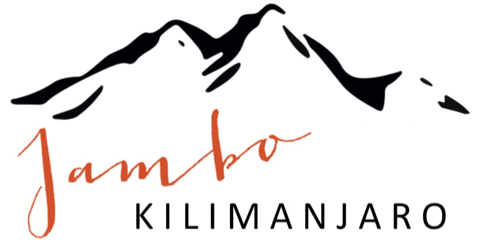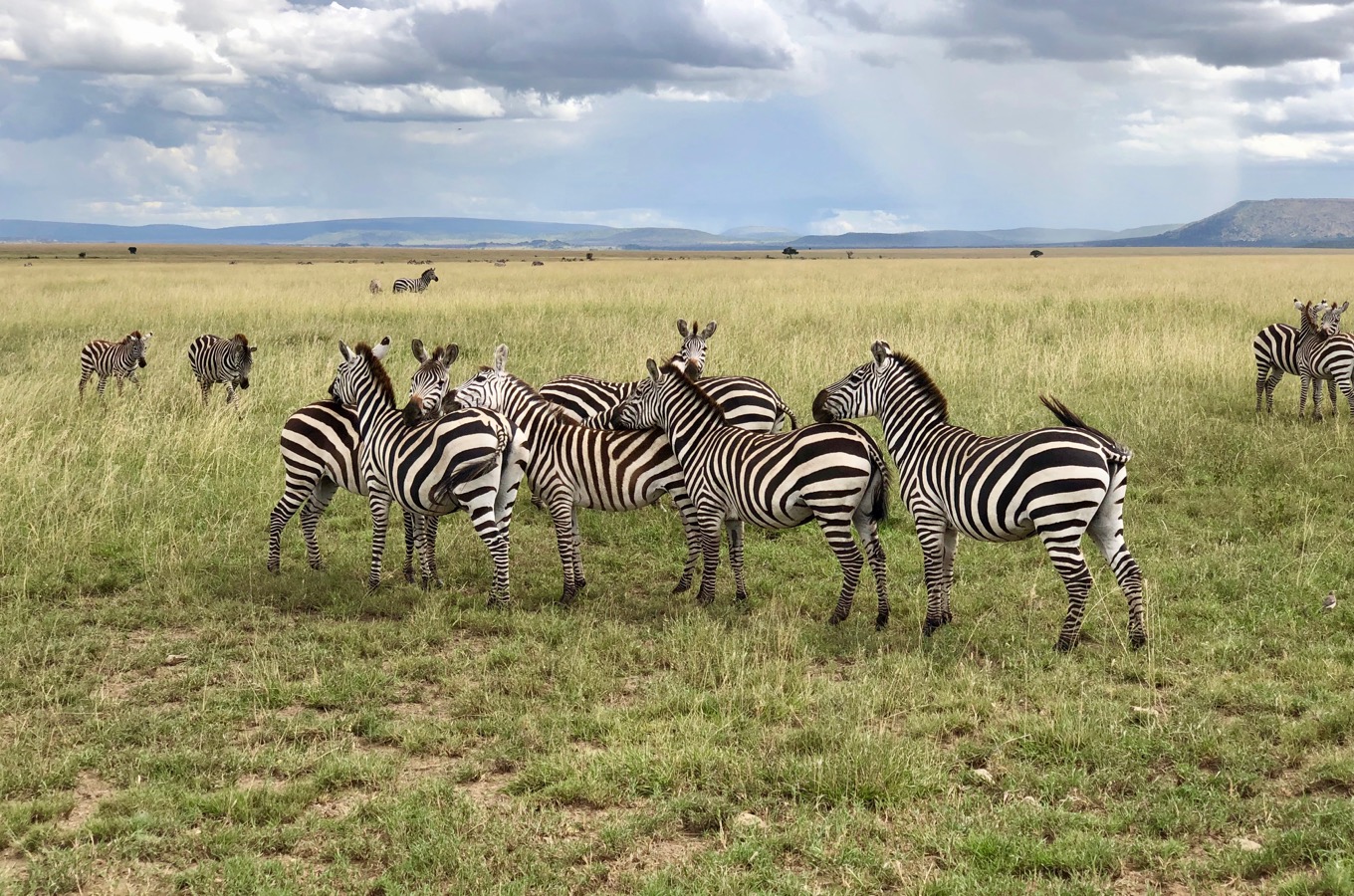On the second day of our safari we had breakfast only shortly after sunrise. Our cook was on his feet well ahead of us and had made remarkable efforts to prepare an outstanding breakfast for us. As we had planned to stay in lodges during the following days and thus would no longer require a cook, we said goodbye to him and continued towards the Serengeti National Park. The first part of the included an ascent up to the Ngorongoro Crater rim, located within the Ngorongoro Conservation Area. This area is not to be confused with the Ngorongoro Crater: the Ngorongoro Conservation Area covers a much larger area and allows settlements of Massai. The Ngorongoro National Park is located in the Conservation Area and only comprises the crater. As in any national park, people, including the Massai, are not allowed to settle here.
Once arrived at the entrance to the Conservation Area, our driver registered us. The procedure is similar to any national park. A short time later we continued the journey. Dense fog hung between the trees of the highlands, so that the visibility was sometimes reduced to only a few meters. The temperature was about 15 degrees, which we found to be a pleasant change. After about half an hour the sky cleared up. We left the highlands and reached the foothills of the Serengeti.
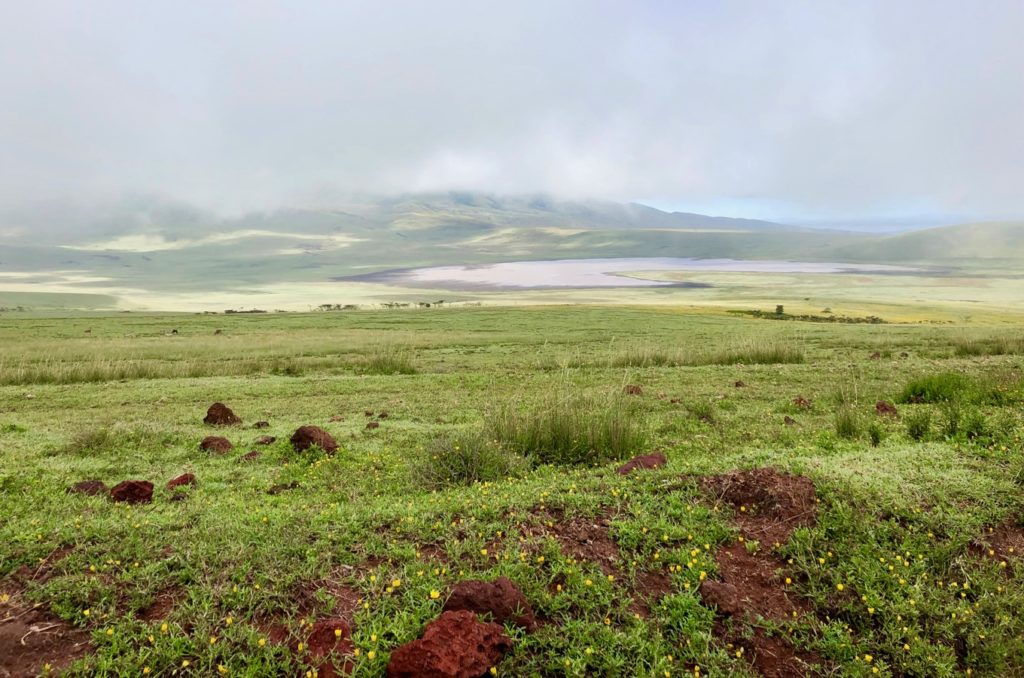
Serengeti, here we come!
Serengeti means endless expanses and nature and wildlife as far as the eye can see. After less than an hour we reached the entrance of the Serengeti National Park. Now, at the latest, we became aware of the dimensions of the national park, which covers only part of the entire Serengeti area. Since the beginning of the 1980s it has been a UNESCO World Heritage Site and covers an area of more than 14,000 square kilometers. This is about 17 times the size of the federal state of Berlin. Since the entrance to the Serengeti National Park was no more than a chic archway, after a quick photo we continued our drive through the meanwhile blazing midday sun. Along the way we saw different animal species, especially gazelles, giraffes as well as zebras and wildebeests. Only a few minutes later we finally reached the place where the usual registration took place. A good time for a lunch break.

Shortly after we started our game drive through the Serengeti National Park. The safari cars all have the very pleasant feature that you can open roof and look outside standing in the car. That’s what we did, driving slow-paced with the warm Serengeti wind blowing around our ears. During that drive we got to see predators for the first time. Hyenas are widespread in Tanzania, although quite shy. Nevertheless, we saw them every now and then during our journey. We also discovered a lion pride that had decided to rest on a big rock. We felt reminded of Disney’s Lion King and shared the joy with other safari cars that had also stopped.
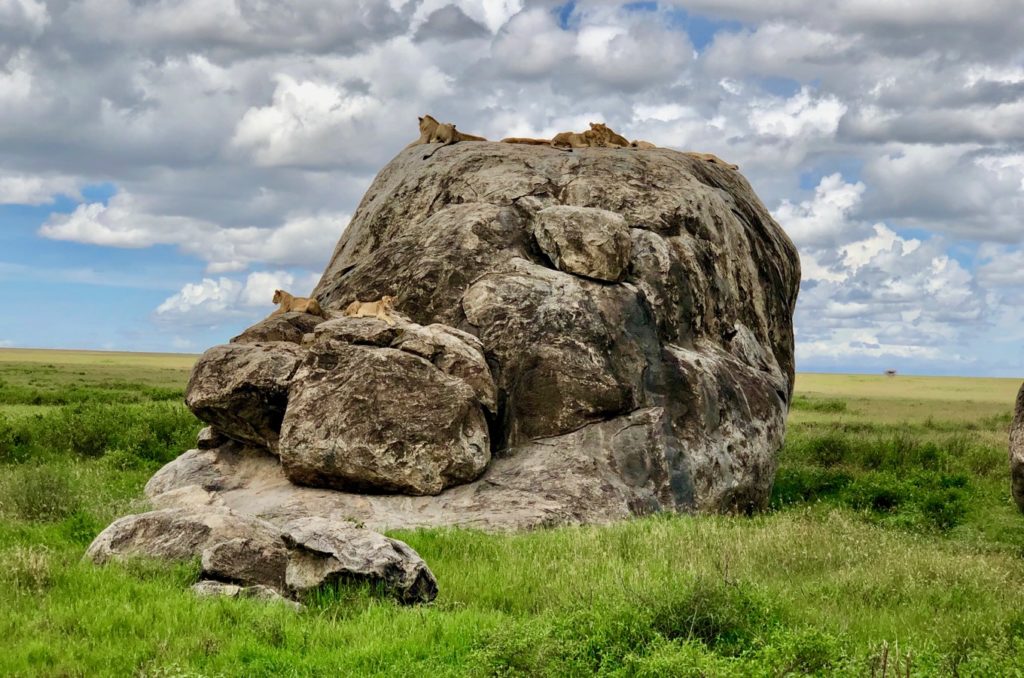
An impressive ride despite the rainy season
Since we were on safari during the rainy season, there were only few tourists and we often had the chance for undisturbed wildlife watching. That was great! During the high season of July, August and December the number of tourists usually rises considerably. This can sometimes disturb the idea of adventure and the experience of watching wild animals. Although it is more likely to rain during low season, we would recommend you consider traveling during the months of April, May and November. Beside a few refreshing raindrops we had impressive views on thunderstorms that crossed the country in the distance. Moreover, the Serengeti, like the other national parks, is greener than during the dry season, which gives the country more charm and variety.
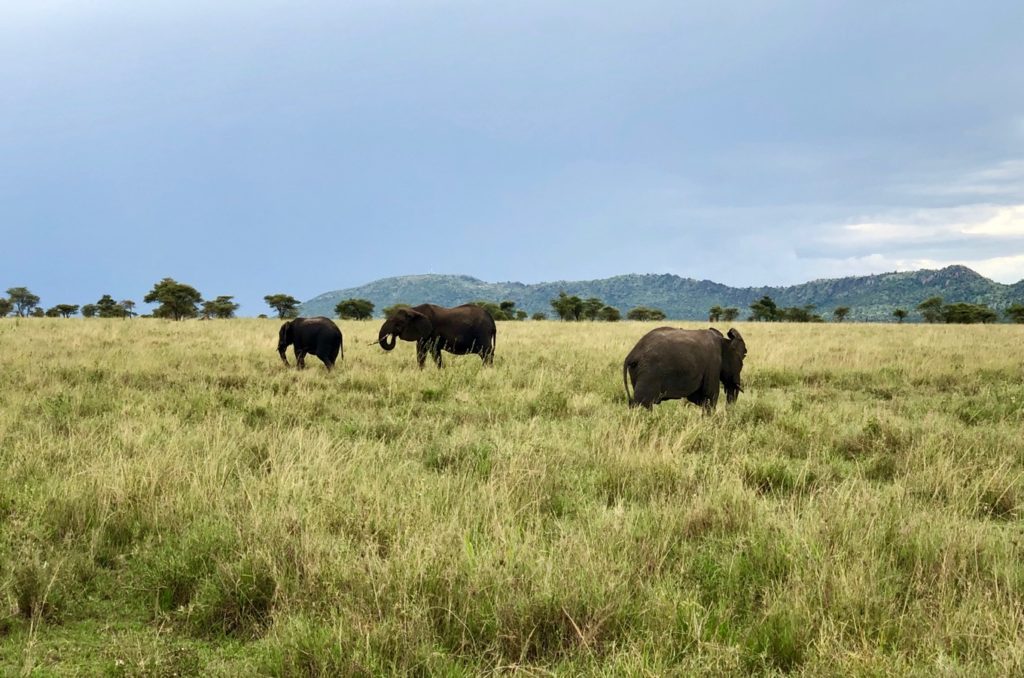
We continued our game drive through the national park for a few hours. We saw countless animals, once more elephants and even one of the rather shy cheetahs. Early in the evening we arrived at our accommodation for the night, the Serengeti Thorn Tree Camp, which is a tented lodge. It is located in the middle of the central Serengeti, on a small hill. Accordingly, we had great views of the Serengeti. Tented lodges are a combination of a campsite and a lodge. The tents you sleep in are more like a bungalow than classic tents. They are equipped with their own bathroom and beds, as can be found in lodges. Only their outward appearance points to a tent.
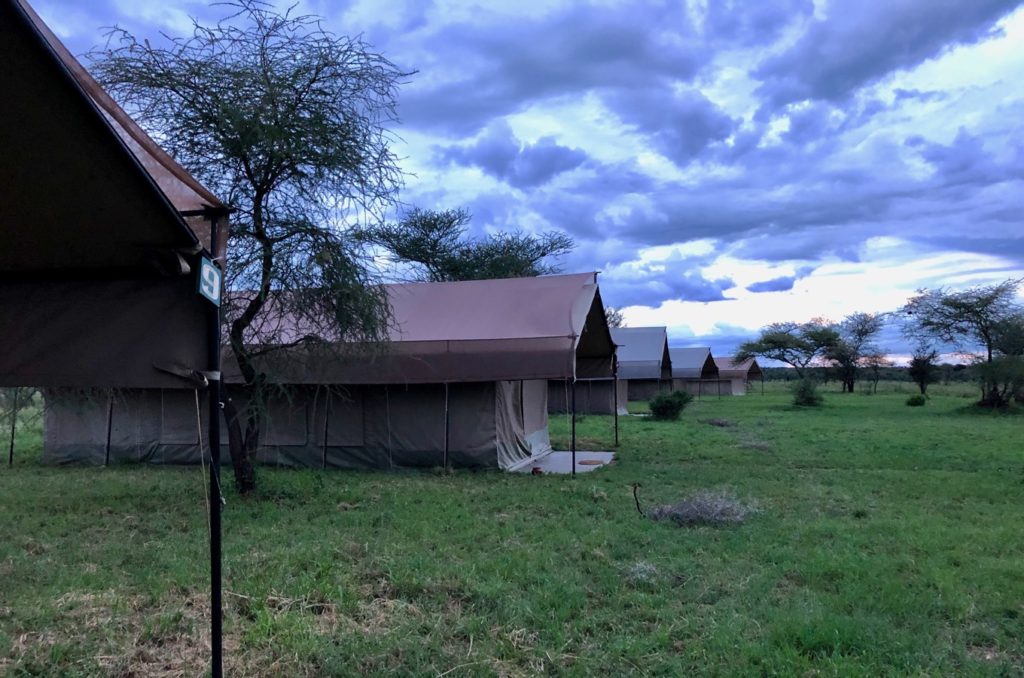
For us the evening and the night at Thorn Tree Camp were in any case a special experience. Close to the main tent, where you have dinner, there is a small fireplace, which invites you to linger at sunset. Since the whole area is not fenced, one has good chances to see animals day and night. Thus we frequently heard lions and hyenas also during the night. However, there is no reason to worry – the tents are stable and after sunset you only move outside the tents with a companion from the camp.

